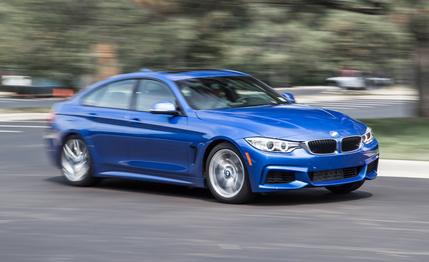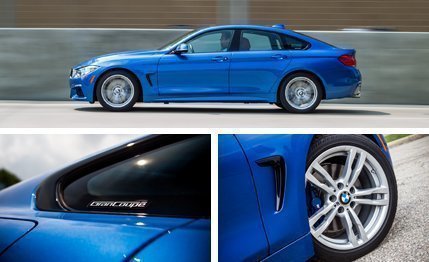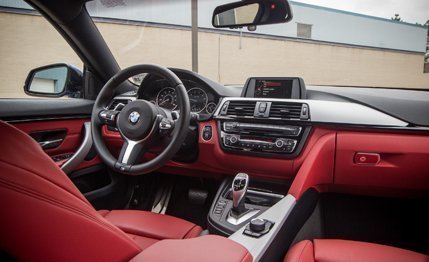 Instrumented Test
Instrumented Test
What’s this? Yet another derivative of the F30 BMW 3-series? Indeed, that benign sedan has now sired a wagon; a long-wheelbase Gran Turismo five-door; and the 4-series trio of coupe, convertible, and this Gran Coupe—which, despite its name, is not a coupe. Its door count doesn’t make it a sedan, either, because this five-seater is actually a cleverly disguised hatchback.
BMW’s bits have grown as familiar as our own reflections. Either a 2.0-liter turbocharged four-cylinder making 240 horses and 255 pound-feet of torque or a turbocharged 3.0-liter inline-six rated at 300 horsepower and 300 pound-feet gets matched with a ZF-sourced eight-speed automatic. While four-wheel drive is a $2000 option, a manual transmission cannot be had in the Gran Coupe at any price. The 428i model starts at $41,250 and the 435i at $46,750, a $300 savings against each corresponding 4-series coupe.
 Top: BMW is determined to see exactly how thinly it can slice the 3-/4-series pie. If it added a "d" to Gran, would it be a new model?
Top: BMW is determined to see exactly how thinly it can slice the 3-/4-series pie. If it added a "d" to Gran, would it be a new model?
Our 428i GC’s test sheet reads like a duplicate of the coupe’s. With identical gearing and wearing the same staggered 18-inch Bridgestone Potenza S001 run-flat summer tires, the GC ran the quarter-mile in 14.2 seconds at 98 mph, just a tenth of a second and 1 mph behind the coupe. A 162-foot stop from 70 mph trims two feet from the coupe’s performance. Skidpad grip was the same at 0.89 g.
The cars betray no more difference on the road. Once you’ve selected the sport driving mode to stiffen up the adaptive dampers included in the $1000 Dynamic Handling package on our test car, the GC displays the platform’s customary trait: a satisfyingly solid control of body motions undermined by unexceptional steering feel.
The 3664-pound Gran Coupe weighs 135 pounds more than the coupe, enough to drop the EPA highway rating from 35 mpg to 34 for the GC. We saw 27 combined.

Though there is a half-inch less headroom than in the 3-series sedan, rear accommodations are still fit for adults. BMW cites equivalent cargo capacities for the sedan and GC, yet we were able to stuff an additional fifth bag of mulch in the hatch. Certainly, you could do worse in choosing a BMW from the 3-/4-series line (e.g., the cetacean Gran Turismo).
Can you do better? Hard to say. BMW offers twice as many body styles now as it did in the 3-series range of a decade ago. This can only escalate expectations: With so many cars, surely one of them has to be perfect! But as we drive every new variant, we wonder what compromises were made to the original formula to allow it to work for the additional models, and how much time BMW was able to spend tuning each one. The truth is that their differences are outweighed by their similarities, the most prominent being that no 3- or 4-series is as engaging as in years past.